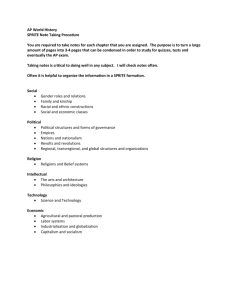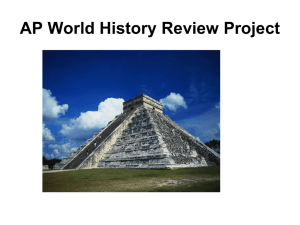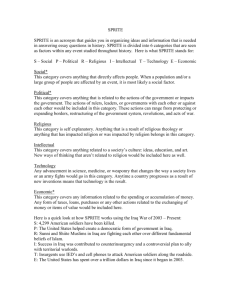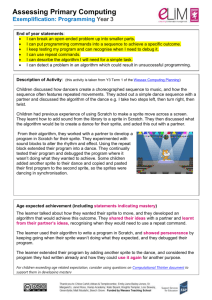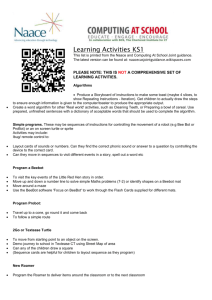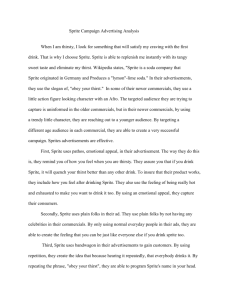AP World History Summer Assignment 2015-2016
advertisement
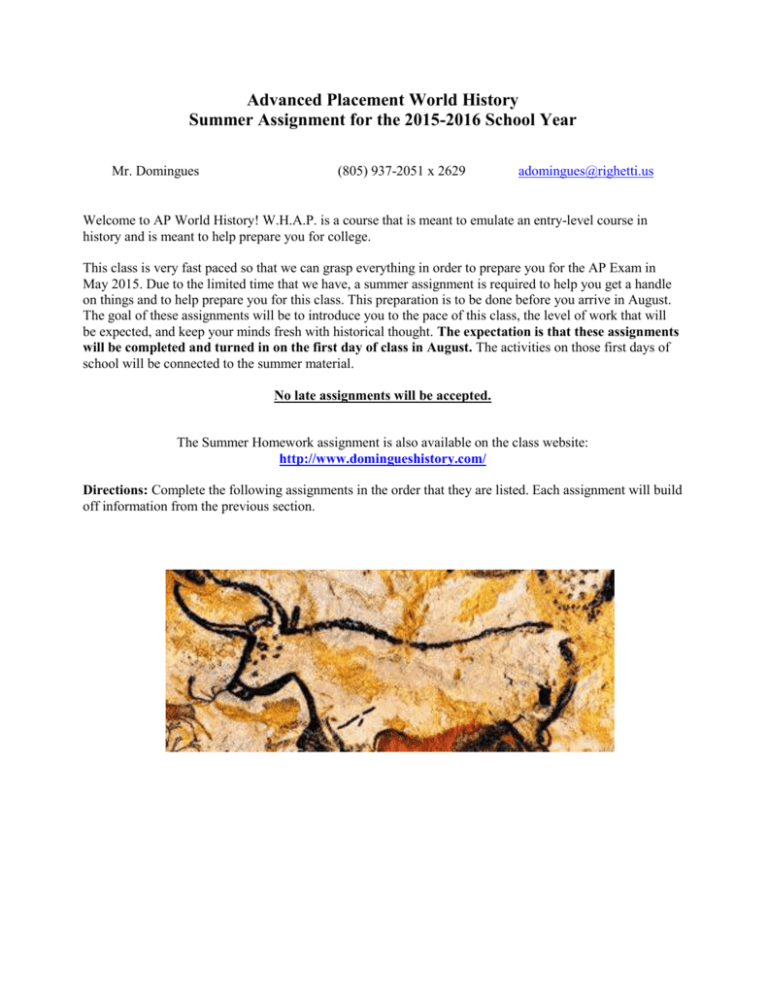
Advanced Placement World History Summer Assignment for the 2015-2016 School Year Mr. Domingues (805) 937-2051 x 2629 adomingues@righetti.us Welcome to AP World History! W.H.A.P. is a course that is meant to emulate an entry-level course in history and is meant to help prepare you for college. This class is very fast paced so that we can grasp everything in order to prepare you for the AP Exam in May 2015. Due to the limited time that we have, a summer assignment is required to help you get a handle on things and to help prepare you for this class. This preparation is to be done before you arrive in August. The goal of these assignments will be to introduce you to the pace of this class, the level of work that will be expected, and keep your minds fresh with historical thought. The expectation is that these assignments will be completed and turned in on the first day of class in August. The activities on those first days of school will be connected to the summer material. No late assignments will be accepted. The Summer Homework assignment is also available on the class website: http://www.domingueshistory.com/ Directions: Complete the following assignments in the order that they are listed. Each assignment will build off information from the previous section. Assignment #1 – Global Geography Please label the following locations on the map provided. For larger geographical features (deserts, mountain ranges, etc.), please color code the region as designated. You will be quizzed on these geographical features during the first full week of school, so please memorize them. These maps will also be used as a resource throughout the year. Please complete them neatly. Continents North America South America Europe Asia Africa Australia Antarctica Oceans, Seas, Lakes, and Bays River Atlantic Ocean River Pacific Ocean Indian Ocean Arctic Ocean North Sea Baltic Sea English Channel Norwegian Sea Barents Sea Mediterranean Sea Adriatic Sea Aegean Sea Black Sea Caspian Sea Great Lakes Red Sea Persian Gulf Arabian Sea Bay of Bengal South China Sea East China Sea Caribbean Sea Hudson Bay Sea of Japan Rivers Nile River Tigris River Euphrates River Amazon River Mississippi River Rio Grande Indus River Ganges Yellow Yangtze River Irrawaddy River Mekong River Congo River Deserts [Green Stripes] Gobi Kalahari Sahara Thar Mojave Mountains [Brown Stripes] Caucasus Himalaya Hindu Kush Ural Alps Appalachian Rocky Andes Atlas Assignment #2 – Early Civilizations – SPRITE Charts Research and take notes on the following early civilizations by constructing a SPRITE chart for each one. As we will be learning about and comparing many different cultures during the course, you will often be asked to organize content in this way. Use chapters 1—6 in Traditions and Encounters to complete this assignment. SPRITE: Social: How do individuals of this group relate to one another? Is there a class system or social hierarchy? Are there any inequalities among members of this group? Are there any gender roles? How are members of the group organized? Political: Who has power in this group? How do they get this power? How is power asserted and enforced? What is the structure of government? Were there any significant wars, treaties or laws associated with this culture? Religious: What are the basic religious beliefs of this culture? How does this culture worship? Who leads the religion? Were there any significant religious leaders or documents? How does the religion of this culture shape its social or political interactions? Intellectual: Who were the major thinkers of this culture, and what were their ideas? What is the educational system of this culture? Identify any major artistic, philosophical, or scientific advances. Technological: What innovations did this culture develop? How did the use of technology affect the culture’s social system, political organization, or environment? Economic: How did people of this culture earn a living? What commodities are valued and traded? What are major trends in agriculture, commerce, manufacturing, and industry? How does the economic system of the culture affect its social and political organization? *Notes: When recording information in a SPRITE chart, be sure to simplify and generalize. Do not write in full sentences. Do not record anything word for word. Your goal is to record only the key ideas—do not worry about being overly detailed. Civilizations: Paleolithic Society Babylonian Ancient Egypt Shang/ Zhou China Neolithic Society Sumerian Phoenician Indo‐Europeans Indus River/ Harappan Aryan Early Andean (Moche, Chavin) Olmec/Maya Assignment #3 – Vocabulary Please research and take notes on the following key vocabulary terms. Notes may be taken on index cards, or on a separate sheet of paper. As with the SPRITE charts, focus on key ideas, not details. Again, everything must be in your own words. Use chapters 1—6 in Traditions and Encounters to complete this assignment. Terms Hammurabi’s Code Patriarchy Hebrews/ Israelites/ Jews Fertile Crescent Bantu Migrations Mandate of Heaven Austronesian Migrations Gilgamesh Epic Cuneiform Monotheism Caste system Assignment #4 – Thesis Statement Write a thesis statement in response to the following question: In the transition from the Paleolithic to the Neolithic eras, what did humans gain and lose? A thesis statement is 1‐2 sentences explaining a basic argument or evaluation. It will be used to serve as the basis for an essay which you will write in September. Use the information in the SPRITE charts you constructed to create your thesis statement. SPRITE CHART Culture/Civilization: SOCIAL POLITICAL RELIGIOUS INTELLECTUAL TECHNOLOGICAL ECONOMIC
